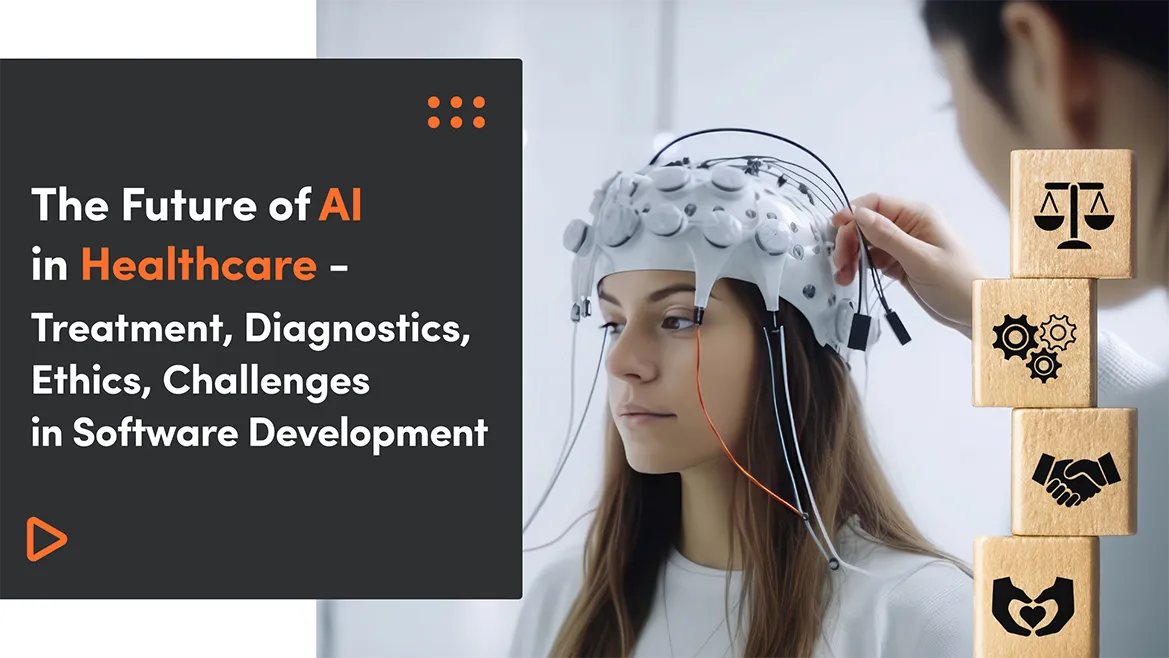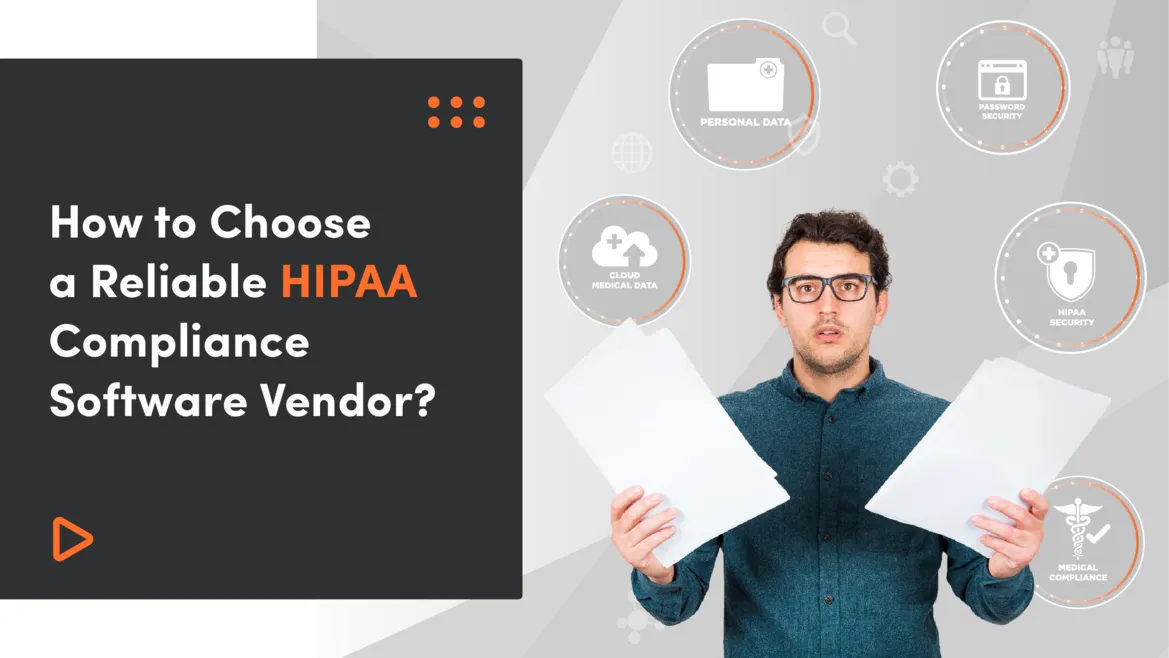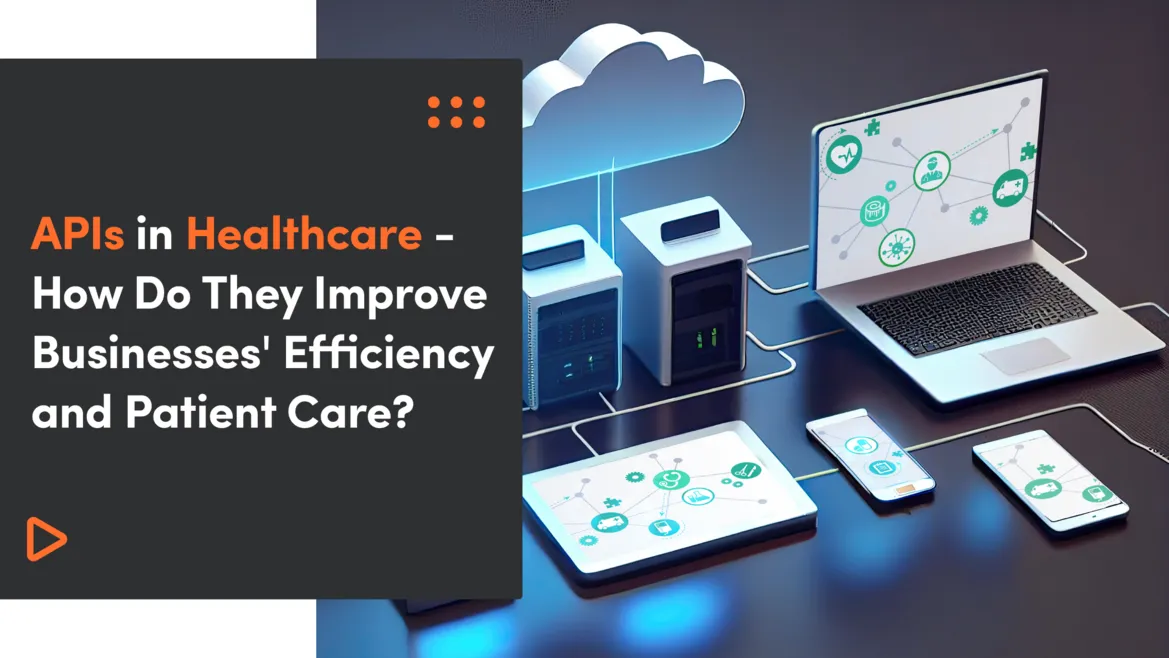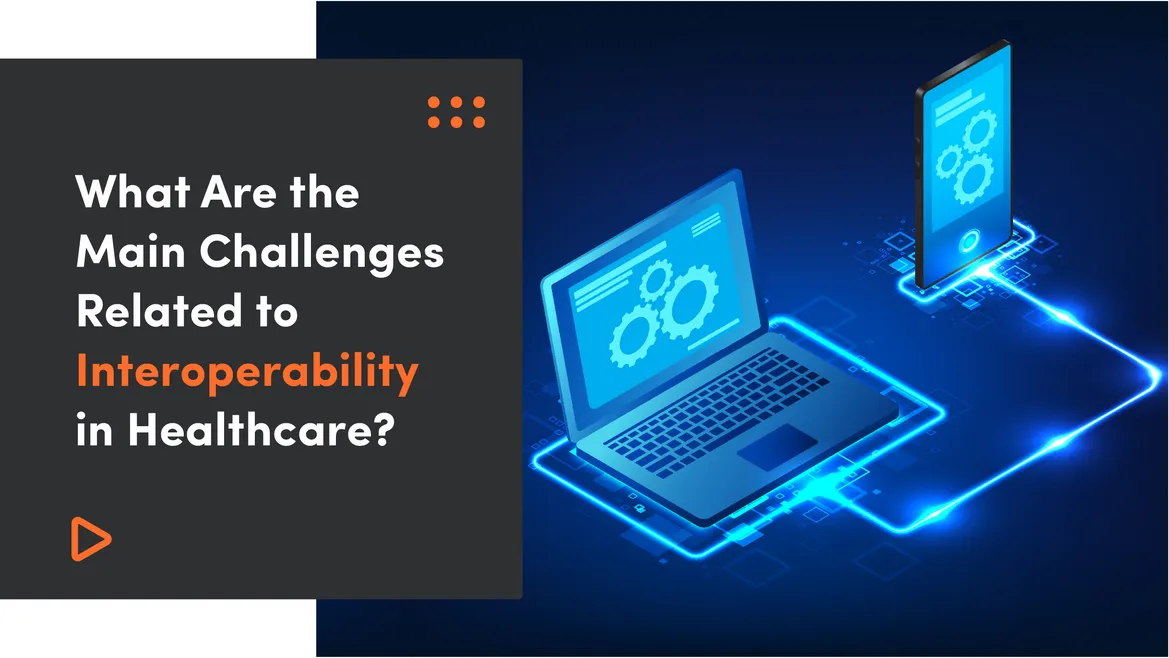Healthcare uses AI across many areas of the healthcare sector. It uses related technologies like deep learning, machine learning, and natural language processing. This new field can transform how medical organizations work. It will change administration, diagnosis, treatment plans, and patient care. Artificial intelligence (AI) helps healthcare by improving diagnostics and speeding up drug discovery. It also automates tasks, enhances patient care, and assists in surgery. Organizations that use regulated AI often work with custom software development partners. This helps them align data, compliance, and clinical workflows from the start.
Artificial intelligence (AI) systems can reduce errors and detect health problems early. They save lives by analyzing large data sets and finding patterns. In clinical practice, these tools improve patient care. They also lead to better patient outcomes across modern health systems. Patient trust in AI tools is critical, yet it often lags behind clinician optimism. The use of artificial intelligence in healthcare will keep growing as technology advances. It will improve patient outcomes and make business processes more efficient.
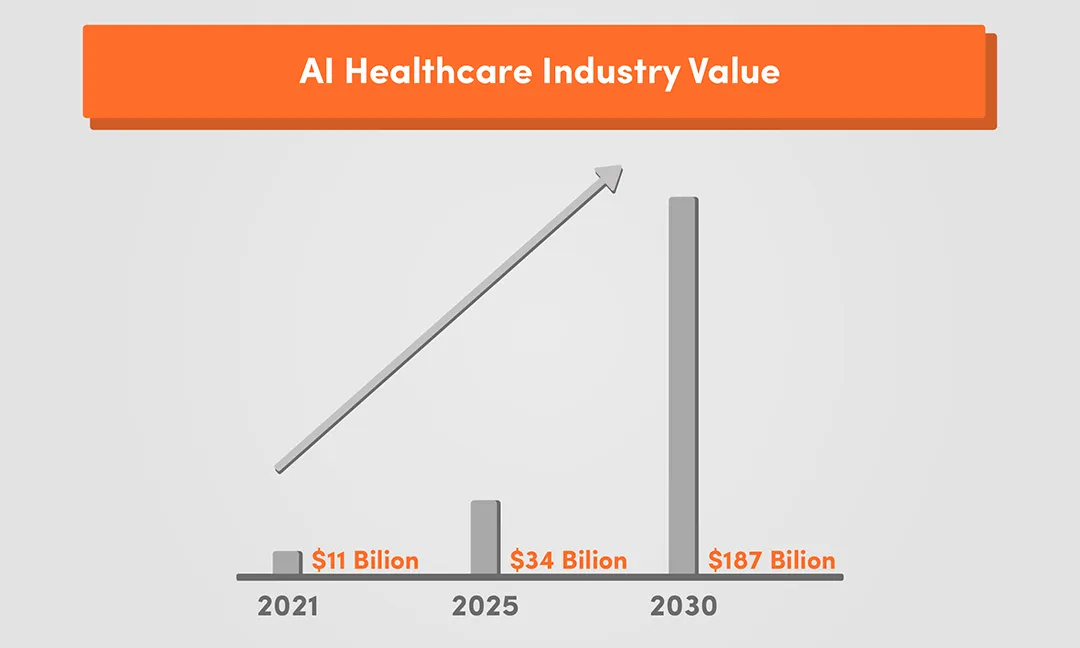
Statista says the artificial intelligence in healthcare market was $11 billion in 2021. It could reach $187 billion by 2030. Rapid use of artificial intelligence is changing global health systems. It brings smarter diagnostics, better predictions, and connected AI tools. These AI in healthcare advances will make patient care more equal and consistent. They connect services and improve precision in diagnostics and treatment.
Some experts worry that AI in healthcare is changing how software is built. The main concern is ethics and patient data security. People use software every day. They bank, track fitness, check blood pressure, and book doctor visits. These data track our daily lives for analysis. They build profiles to show ads and recommendations. Big data and analytics affect both people and health systems. These systems must protect sensitive medical information.
Artificial intelligence in healthcare offers many benefits but also some risks. These include data sharing, algorithm bias, and other challenges. The amount of biometric and contextual data processed by AI tools has grown fast. The key ethical question is how to use the data. It must balance innovation with safe patient care.
Businesses frequently view user data as a valuable asset and seek to generate revenue from the data they retain. Biases by AI algorithms are one of the more serious ethical challenges that today's healthcare software developers face. The only thing an AI algorithm can learn is what it is taught.
What is the Future of AI in Health Care and the Whole Healthcare Industry?
Congress and the FDA want companies to balance AI’s benefits and risks. Their goal is to protect healthcare delivery and patient safety.
Here are key points from the FDA and Congress on AI. They describe the future of AI in the healthcare industry. This topic appears in the Future Healthcare Journal. It is also mentioned in reports from the World Health Organization.
- Regulatory Status and Oversight: This section explains current and future uses of AI/ML in medicine development. The article focused on key issues such as model design, data quality, and human oversight. The FDA explained how AI and ML help health care providers and medical practices. These tools support clinical decision making and improve patient outcomes.
- Defining AI: A Moving Target: Determining the precise nature of AI is the first step towards its regulation. AI, as it exists now, is very different from the term "thinking machines" that was first used in 1955. AI means computer programs that think like humans. They understand human language and learn from data. It is a fast-changing field that blends algorithms with human expertise. It includes many technologies, each with its own uses and limits.
- Tailored Regulations for Specific Contexts: Congress is aware that there isn't a single AI solution that works for everyone. Enforcing broad, comprehensive laws that inhibit creativity would be detrimental. Artificial intelligence must be regulated by its purpose and context. Like software in power plants, aircraft, or medical devices, each use needs its own rules. AI should fit into existing healthcare delivery frameworks. New ones should be built or updated only when needed to help chronically ill patients.
- Striking the Right Balance: It is good that Congress studies the impact of AI. But it must also avoid too many regulations. Broad rules can hurt innovation. They often help big companies and block new ideas. We need clear, flexible laws that protect data and support innovation. They should also keep human expertise central to medical practices.
- The Role of AI in Drug Discovery: Drug discovery has enormous promise for AI. AI can speed up the process by finding strong drug candidates. It also helps design medicines that target specific areas. In the next decade, AI could create 50 new therapies. It may also save billions in research costs. The first drug made with AI is already in clinical testing in China. Computer programs and human expertise can work together to make healthcare better.
- FDA's Evolving Role: The FDA must adapt to new ways of using AI in drug development. It is good that the FDA talks about AI’s impact on drug development. It includes voices from business, academia, patients, and regulators. The FDA needs enough knowledge and funding to keep pace with artificial intelligence. Congress should help its growth. It must also support clinical decision making and healthcare delivery.
- Challenges in Diagnosing: AI is highly impacting medical diagnosis and treatment. It helps diagnose illness with image reconstruction and heart rhythm sensors in smartwatches. Since the start of the AI revolution, the FDA has approved many AI-based medical devices. These methods make healthcare delivery more accurate and accessible for chronically ill patients. They also help health care providers make faster and more accurate decisions.
- Adapting FDA Framework for AI: The system was not built to follow updates in AI-powered products. Congress may need to review laws that protect patient data. These rules should keep systems safe and flexible. Regulating AI in healthcare needs clear rules on openness, results, and responsibility. This is vital for medical practices that use AI tools to aid clinical decision making.
- Supporting Patients and Providers: Artificial intelligence helps health care providers work faster. It saves billions by improving healthcare delivery and management. Clinical decision assistance, scheduling, and claims administration can all be enhanced by it. To use AI-enabled devices well, we need clear safety rules and proper doctor training. These steps are vital when treating chronically ill patients.
- Balancing Privacy and Progress: Large sets of patient data are needed to develop AI. They often include sensitive health information. Using AI to improve healthcare delivery is hard. It must also protect patient privacy. Congress should review laws like HIPAA for AI. Updates must protect privacy and the quality of care from health care providers.
Choose a healthcare software development company with HIPAA expertise. Then your systems, logs, and access controls meet the rules.
10 Benefits of Artificial Intelligence in Healthcare: From Health Data to Better Health Outcomes
The AI-powered healthcare market could pass $34 billion by 2025. Its growth comes from flexibility and many benefits. This growth shows that health care organizations now use AI-driven solutions more often. They aim to boost efficiency, accuracy, and patient outcomes. Here is a list of how AI will drive healthcare advancements in the upcoming years.
Easy Real-Time Access To Complex And Important Data
AI is entering medicine fast. One strong reason for this change is healthcare data analytics. Healthcare machine learning algorithms can process large amounts of data fast. They use artificial intelligence to analyze medical images and help with disease diagnosis. How is this accomplished?
- AI and electronic health records help find patient data faster. This saves time and improves the quality of health care services.
- AI in healthcare makes it easier to collect and study electronic health records. This helps doctors predict and manage disease risk. This looks like the next big step in the field. It builds on work by national health systems like the National Health Service. They use AI tools to speed up disease diagnosis and improve patient outcomes.
AI Can Increase Efficiency in Healthcare Diagnoses

Predictive analytics helps doctors make accurate diagnoses and predict future health problems. Artificial intelligence studies past diagnoses and patient symptoms using simple prediction tools.
Precision medicine combined with artificial Intelligence has produced end-to-end driven AI healthcare software and mobile applications that can forecast potential diseases or hereditary disorders based on patient and family member health data.
Here are a few examples of how AI-powered software can be used to check symptoms and get a diagnosis:
- This AI-powered symptom checker helps users find possible causes of their symptoms. It uses natural language processing and electronic health data for more accurate results.
- Buoy is an AI-powered symptom checker that asks about medical history and symptoms. It helps users find possible causes and supports doctors using personalized medicine.
- The app SkinIO uses artificial intelligence to study moles and skin spots. It supports human intelligence in detecting skin cancer more precisely.
- AI chatbots can spot symptoms and suggest next steps for patients. These tools also support medical research and improve diagnostic algorithms over time.
AI can improve patient outcomes and lower treatment costs. However, its enormous influence on diagnosis is still to come. Studies show that artificial intelligence can diagnose skin cancer better than doctors. It can also detect the disease much earlier. AI helps teach patients and supports personalized medicine that uses electronic health data. These lessons often come through e learning software development for doctors and patients.
Cost Savings
Undoubtedly, it is also difficult to overlook how affordable AI is for the medical field. AI can cut costs and make healthcare easier to access. It changes the field by automating hard tasks that once needed human intelligence. Examples include computer vision in medical imaging. They also include natural language processing in healthcare and healthcare data analytics. Most MedTech companies now use digital tools and IT. They do this to improve how they work. For broader context on clinical and operational gains, see How Could Software Improve Healthcare?
Faster Data Processing
Every day healthcare practitioners generate hundreds of terabytes of patient data daily. The amount of patient data is huge, but AI can handle it easily. AI uses this data to predict outcomes. It also helps improve patient care and make medicine more efficient.
AI uses neural networks and image recognition to process large patient data. It suggests better treatments. It also helps lower healthcare costs with early action and smart resource use.
Early Disease Detection
Early identification of diseases has revolutionized with the use of AI in healthcare. AI in the healthcare system can quickly sort electronic health records. It uses machine learning to support the clinical workflow. These methods help find small patterns in data that doctors might miss. This progress comes from advances in computer science and data-driven modeling. This ability matters most for diseases like cancer. Early diagnosis can change outcomes and lower the costs of late treatment.
This quality is especially important for diseases like cancer, when prompt diagnosis can affect prognosis significantly and help reduce costs associated with late-stage treatment.
AI is changing how cardiac disease is managed. It works with consumer wearables and medical equipment to improve care. These AI-powered tools track health signs all the time. They help find early cardiac disease so doctors can act sooner. AI can adjust chemotherapy doses using each patient’s data. It also spots adverse drug reactions before they become dangerous.
Platforms such as IBM Watson for Health, which leverages cognitive technology to analyze vast quantities of health data and enable quicker and more accurate diagnosis, serve as examples of how these systems are beneficial in the real world.
Robot-assisted Surgery
In the field of medicine, surgery is among the trickiest and hardest procedures. Every cut and movement genuinely impacts human lives.
High-accuracy surgical robots are already a reality because of the combination of AI and ML algorithms in the medical field.
AI-powered healthcare robots move with precision and control. They perform tasks that typically require human intelligence and never get tired or biased. This shows the benefits of robotic healthcare. These systems cut human error in complex surgeries. They also help surgical teams make better medical decisions.
Below are two ways healthcare robotics can be applied in surgery:
- The Da Vinci Surgical System: a robotic surgical apparatus designed to carry out minimally invasive procedures. Surgeons operate a console, while robotic arms hold and move surgical equipment as part of the system. The Da Vinci system can perform many surgeries. These include prostate, uterus, and heart operations. Medical schools now use these tools in training programs. They teach precision and real-time coordination in robotic surgery.
- ROSA (Robotic Surgical Assistant): in neurosurgery, ROSA serves as a highly precise robotic assistant. The robotic arm of the system is fixed on a movable base. In brain surgery, the robotic arm guides the tools. The doctor controls it with a simple joystick. ROSA helps with deep brain stimulation, epilepsy, and brain tumor surgeries. It cuts human error and gives data insights. These insights help doctors make safer medical decisions.
Enhanced Patient Trust
Artificial intelligence is still new in the healthcare system. It is revolutionizing healthcare. Still, patients and families are careful about robots and machine learning. This happens for many reasons. People worry about data security, data protection, and accurate diagnosis. It is most serious in mental health, where privacy and trust are key to good care.
Human beings, not faceless machines, are what people are accustomed to trusting. These are the problems that AI-driven medical software aims to solve.
AI technologies give patients personalized care and 24/7 access to medical data. This builds their trust and improves the overall experience.
Incident Management and Risk Prediction
Healthcare institutions must abide by regulations such as the General Data Protection Regulation and the Health Insurance Portability and Accountability Act.
Another difficult task is ensuring that data can be audited and traced. AI makes this easier and increases the transparency of reporting processes.
Hospitals need to link their current software with AI-based tools. This allows real-time event reports and root cause checks.
The automated AI system sends alerts to all parties. It also links them to policy documents for the case. It tracks progress and updates the status. The system also asks staff for notes or comments.
Location Tracking and Alerts
Smart medical devices enable real-time alerts, tracking, and monitoring. They improve patient care delivery and help doctors act fast. They also support medical decisions with better accuracy. Medical literature often discusses these innovations. It shows how connected devices and real-time analytics are changing modern healthcare practices.
Employee tracking is facilitated by using sensors to track wheelchairs, scales, nebulizers, pumps, and monitoring equipment.
Drug Discovery and Development
A drug's journey from a research lab to a patient is frequently a long and costly one, with an average cost of $359 million and 12 years, according to the California Biomedical Research Association. This timeline is still hard for medical research institutions. They seek faster, personalized treatments that lower costs. These treatments also help improve patient outcomes.
AI can find promising new compounds. It shows how drugs interact with the body and other substances. It also finds new uses for existing medications. This speeds up drug discovery and makes outcome predictions more accurate.
Understanding complex biological systems is difficult. Many factors can change therapeutic efficacy and safety. These challenges have long slowed down drug discovery. AI can solve these and other issues by using its ability to analyze and make use of massive data. AI will keep advancing to help us understand disease mechanisms better. It will use data analytics and genomic insights to do this. Virtual health assistants will support this by turning research findings into patient-specific recommendations.
Artificial intelligence brings major benefits to healthcare, especially in drug discovery and development. Not only does AI shorten the time it takes to bring a new treatment to market, but it can also significantly reduce costs. AI will keep changing healthcare. It will bring big advances in personalized treatment, precision therapeutics, and drug discovery.
Try our developers.
Free for 2 weeks.
No risk. Just results. Get a feel for our process, speed, and quality — work with our developers for a trial sprint and see why global companies choose Selleo.
Ethic of AI in Healthcare: Guidance for Healthcare Professionals
When using AI in healthcare, developers must first consider ethical values. The main goal is to promote patient health and well-being. Artificial intelligence powers personalized medicine. It needs transparency, patient engagement and safety. These are basics. Here's a detailed overview of one of the case studies conducted over BMC Medical Informatics and Decision Making discussing the ethical framework of ethical values–ethical principles–ethical norms for implementing AI in healthcare.
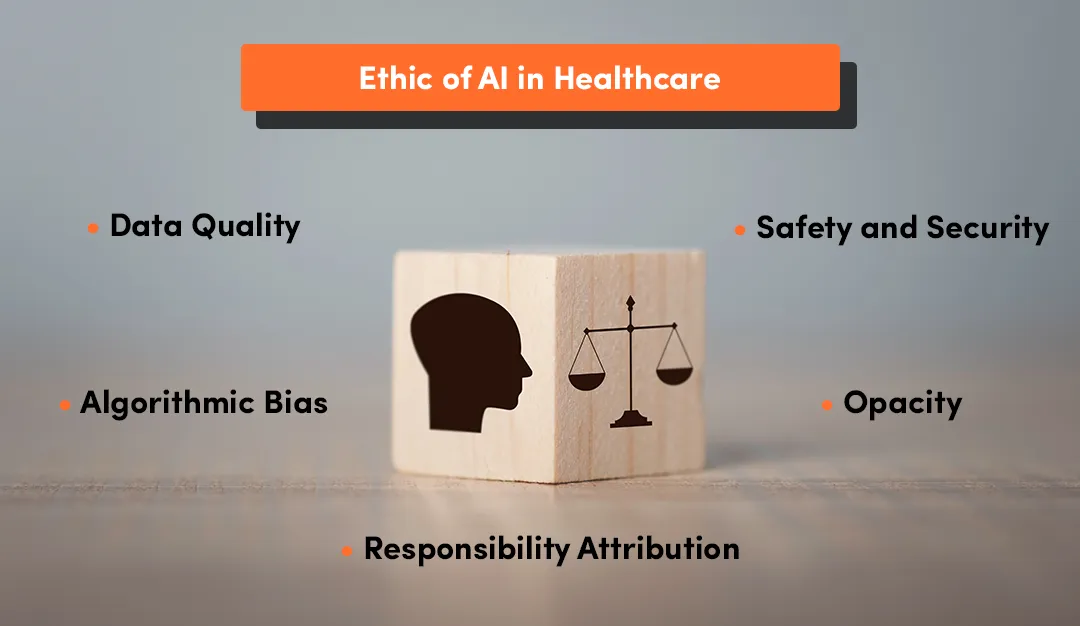
The case study used a multidisciplinary approach. It outlined five key subjects that affect the trustworthiness of medical AI:
Data quality: Medical data comes from many sources. It includes literature data, clinical trial data, and real-world data. Smart medical devices also collect health data. These include fitness apps, heartbeat and blood pressure monitors, and other connected technologies. All of them play a growing role in patient engagement. The foundation of the AI system is the data entered into the system. For example, IBM's Watson for Oncology system is reported to provide "unsafe and incorrect" cancer treatments because the data provided to train Watson's algorithm is not from actual patients but hypothetical from virtual patients. This dataset does not show the full complexity of real clinical situations. It makes the algorithmic model less accurate. It can also increase the risk of adverse drug reactions when treatment choices are wrong or come from poor data. High-quality data input is essential for any AI system. It is the main condition for AI development and for safely expanding personalized medicine.
Algorithmic bias: Algorithmic bias consists of both human-induced bias and data-induced bias. There are high possibilities that developers intentionally or unintentionally write human-induced bias because humans are always influenced by their own moral perceptions. It affects AI algorithm training and may compromise patient engagement and equality in care outcomes.
Algorithms do inherit human biases, but such biases are also likely to be amplified and reinforced with the accumulation of data and iterations. It is important to identify and assess the value of developers' subjectivity. When designing the algorithm, it may require a longer-term, multi-user, or big data-based analytical judgment.
Opacity: There are three reasons for opacity:
- Algorithms are secrets that companies intentionally hide.
- The inability of employees to understand programming and algorithmic techniques.
- The complex nature of the algorithms, which are incomprehensible to humans.
The AI function that relates to the input and output of the data is too complex for a non-technical person to understand. Sometimes, even the developer may not understand the logic of the AI algorithm calculations. The opacity can lead to wrong disease diagnosis. It may also suggest unsafe treatment, which can be life-threatening for humans.
Safety and security: No technology is 100% safe. When using AI in healthcare, the first goal is to keep data safe and secure. This is vital because medical AI must always aim to protect and promote human health. When medical AI goes wrong, it can cause serious harm to people.
The safety issues of medical AI data are the risks and harms found in its practices, such as program errors, cybersecurity threats, lack of adequate testing, difficult software certification, etc. It is important to fully consider the ethical and moral prospects when dealing with the safety of medical data.
Responsibility attribution: Medical AI has replaced many tasks previously performed by physicians. It has undoubtedly changed the relationship between patients and doctors, which poses a dilemma in the division of ethical responsibilities. If any medical accidents occur, who should be held responsible? Can AI be the subject of liability? If not, what moral status should we give to AI systems? To what extent should the AI system be held responsible? Or who should be accountable for mishandling AI in healthcare?
Ethics and morality are the two most important aspects of any legal system, and ethical requirements must carry out AI technology innovation. An ethical framework for AI integration, manufacturing, and use should be established. There should be a proper system to evaluate the rights and wrongs of decisions and actions in the AI field. Ethical values should be the foundation for developing AI technologies that allow broader presuppositions to address potential technological risks.
How Does AI Impact Diagnostics and Treatments in Hospitals nd Clinical Practice to Improve Health Outcomes?
Diagnostics has witnessed unprecedented advancements in recent years, with artificial intelligence in healthcare playing a pivotal role. Here is how AI systems have impacted the diagnosis and treatments in hospitals. AI tools assist in analyzing whole-slide images in pathology, quantifying biomarkers, and detecting mitoses to reduce errors and improve diagnostic precision.
Enhancing Medical Diagnostics
AI has greatly improved at reading complex medical data, such as radiological images. This progress in diagnostics brings better results. It helps detect diseases earlier and makes diagnosis faster and more accurate.
For example, Google's artificial Intelligence (AI) outperforms human performance with an astounding 94% accuracy in identifying diabetic retinopathy symptoms from retinal scans.
Virtual Health Assistance
AI-powered virtual health assistants help patients stay engaged in their treatment. They give advice and send reminders to support regular medication use. Additionally, these virtual health assistants can offer 24/7 patient support, improving engagement, satisfaction, and overall quality of care, with interfaces refined by a web design company to maximize accessibility.
Radiology Automation
AI can spot early signs of diseases like brain hemorrhage in medical scans. This helps radiologists provide faster and more timely treatment.
Personalized Treatment Plans
Using clinical knowledge, research, and medical data, AI can create individualized treatment plans. This data-driven strategy reduces side effects and improves responses. It moves precision medicine into a new era. For example, IBM's Watson suggests personalized treatments. It considers each patient's allergies and medical history. The future of AI in healthcare will use advanced models to guide real-time decisions. These systems will help create personalized therapy recommendations. Integrating AI into clinical workflows can optimize medication doses for each patient. It also improves operations such as revenue cycle management. This helps boost efficiency and keep healthcare organizations financially sustainable.
Predictive Analysis
Artificial Intelligence shows its worth in the field of predictive analytics. AI systems can predict epidemics. They analyze data from many sources and track worldwide travel patterns. A clear example is BlueDot’s AI, which predicted the start of COVID-19 before any official alerts. This early warning showed how powerful AI forecasting can be.
Remote Patient Monitoring
Artificial intelligence (AI) has made modern wearables and medical devices possible. They can track vital signs and collect real-time patient health data. AI algorithms help these gadgets detect early signs of health problems. They also make remote patient monitoring possible. To notify medical professionals of irregularities, wearable AI technology, for example, may continually monitor a patient's blood pressure, heart rate, and glucose levels. It also lowers hospital readmission rates and makes preventive treatments possible, improving patient safety and enabling the development of more personalized treatment plans.
Many remote monitors and sensors are available, including oximeters and continuous glucose monitoring (CGM). Healthcare organizations now have access to higher-quality data due to advancements in AI technology that interface with medical devices, revolutionizing healthcare through real-time analytics and data-driven decisions. However, this digital transformation must also address data protection to ensure the privacy and security of sensitive patient information. As a result, there is increasing pressure on material inventors to offer components that can keep up with this demand while maintaining compliance and trust.
Types of AI Technologies in Health Care
For a concise overview of production-ready approaches, explore practical artificial intelligence solutions used across care delivery and life-sciences R&D.
Machine Learning (ML)
Machines can carry out human activities, including patient classification, discovery of crucial insights, drug discovery, and even prediction of health outcomes when fed high-quality structured data into machine learning (ML) algorithms. Within the scope of artificial intelligence in healthcare, these systems are transforming medical diagnosis processes across healthcare systems worldwide. Results from ML algorithms get increasingly accurate as more data is processed via them. SaaS teams can map these capabilities to product roadmaps; see What Are the AI Functionalities in SaaS Platforms? for patterns and implementation notes.
A kind of machine learning called deep learning allows algorithms to group data and provide remarkably accurate predictions. Scientists can now complete very complex jobs more quickly and without difficulty due to deep learning, as highlighted in recent studies published in the Future Healthcare Journal. Deep learning deploys different techniques to acquire knowledge and analyze medical images with unprecedented precision, assisting clinicians in early detection and decision support.
- Structured, labeled datasets are used in supervised learning to reveal underlying algorithms.
- Unsupervised learning automatically finds hidden patterns in data without the assistance of a person by using unstructured material in its unaltered form (text and pictures).
- To train models, semi-supervised learning combines a large amount of unlabeled data with a small amount of structured, labeled data.
At the core of machine learning algorithms are neural networks, which enable deep learning. Neural networks facilitate quick data classification and clustering by identifying patterns. For example, artificial intelligence in healthcare can improve the accuracy of medical diagnosis and identify tumors in their early stages if it is trained to analyze medical images and recognize variations in cells, such as cancer and malignant tumors.
Natural Language Processing (NLP)
Clinically significant information that is concealed in mountains of human-generated medical records and publications can be retrieved with the use of natural language processing (NLP) tools and algorithms. NLP can help with two primary activities in the healthcare industry: Speech recognition: It saves clinicians from manually entering Electronic Health Records (EHR) notes. Unstructured data processing: NLP algorithms help people interpret information by classifying data, extracting insights, and summarizing them to help in clinical practice. Additionally, natural language processing (NLP) is used to interpret medical records for accuracy in diagnosis. AI-powered scribes can transcribe patient visits, write clinical notes, and create discharge summaries.
Speech recognition: It saves clinicians from manually entering Electronic Health Records (EHR) notes.
Unstructured data processing: NLP algorithms help people interpret information by classifying data, extracting insights, and summarizing them to help in clinical practice.
How does this happen? NLP includes five fundamental techniques:
- Optical character recognition (OCR) is used to digitize handwritten or scanned clinical notes, medical history records, patient intake forms, and other documents.
- Named entity recognition (NER) classifies named entities into specified categories such as medications, dosage, disorders, and so on.
- Sentiment analysis exposes the underlying sentiment of a text (i.e., whether the language is good, negative, or neutral).
- Text categorization adds tags to distinct words or phrases based on preset categories.
- Topic modeling is used to organize texts based on similar words or phrases.
NLP algorithms begin by extracting information from EHRs or medical papers. They then process this information using various approaches to categorize patients or data into certain categories and subgroups.
Rule-based Expert Systems
The most widely used AI technology in healthcare during the 1980s and beyond was expert systems, which were built using variants of "if-then" logic. Clinical decision support using artificial Intelligence is still commonly employed in the healthcare industry. Currently, many electronic health record systems include a set of rules in their software packages.
Typically, human experts and technologists work together to develop a comprehensive set of rules in a particular field of expertise for expert systems. They are simple to understand and process, and they work effectively up to a point. However, if the number of rules increases excessively - typically beyond several thousand - the rules can begin to clash and disintegrate. Additionally, it might be difficult and time-consuming to update the rules if there are major changes in the knowledge domain.
In the healthcare industry, Machine learning is gradually displacing rule-based systems with methods based on data interpretation through exclusive medical algorithms.
Physical Robots
An increasingly common kind of AI in the medical industry is physical robotics. Originally, medical supply delivery robots were created by scientists. Nonetheless, more advanced robots are already on the market. These robots are readily trained to do certain jobs and can work with humans. As AI capabilities are ingrained in the operating system (brain), they are more intelligent. This area of Artificial Intelligence is still looking for opportunities.
Robotic Process Automation
The primary use of this AI technology is in administration. Compared to other forms of AI, robotic process automation, or RPA, is less costly. Despite the name, this procedure involves computer programming rather than actual robots. RPA is utilized in the healthcare industry for billing, updating patient medical data, and recording early authorizations. When combined with other technologies like picture recognition, it may potentially be used to extract data. Similar automation patterns apply in enterprise operations; What is HCM Software and How Does AI Impact Its Future? outlines how AI streamlines admin workflows beyond clinical settings.
Internet of Things
Healthcare professionals can now connect with a wider audience outside of the typical clinical environment due to the Internet of Things. To avoid needless and expensive travel to the doctor's office, home monitoring systems enable healthcare professionals and patients to stay informed about a patient's health when they are not there. Integrating AI-powered chatbots into healthcare systems can reduce healthcare providers' workload and improve patient engagement.
Remote patient monitoring (RPM) technology is another IoT tool that US hospitals and health systems use to enhance outcomes and cut costs. With the use of Internet of Things (IoT) sensors and linked devices, this kind of patient care gives healthcare professionals access to a constant stream of real-time health data, including blood pressure, glucose monitoring, and heart rate.
Challenges and Barriers to Implementing AI in Health Care Across Healthcare Systems
In an era marked by rapid technological advancements, AI and machine learning (ML) have captured the attention of healthcare payers, providers, and researchers. However, implementing AI in healthcare has its own challenges. To address skills shortages and accelerate pilots, many hospitals collaborate with a software outsourcing company experienced in regulated data and EHR integrations. In the next 5 to 10 years, AI is projected to develop algorithms that can efficiently use unlabelled and disparate data to enhance patient care.
Most issues and errors occur when organizations implement AI in their healthcare software solutions without having a proper development plan. A healthcare organization needs to analyze the business demands first. They should analyze their software requirements before integrating AI systems. Healthcare organizations need to give full consideration to whether it is beneficial to implement AI systems; will it work smoothly or not with their existing systems?

Here are some of the most discussed challenges of AI in healthcare:
Technological Advancement Brings Challenges
AI systems hold great potential for transforming patient care, diagnostics, and operational effectiveness. But behind the surface of this technology are a plethora of obstacles that must be overcome to successfully apply it. The major obstacles to deploying AI in healthcare are issues with data quality, security, interoperability, shortages in skills, infrastructure constraints, and financial problems.
These challenges can be avoided by equipping payers, providers, and researchers with adequate training and investment to pave the road for a future in which AI easily integrates into health systems by comprehending and tackling these challenges.
Data Challenges in Implementing AI in Healthcare
High-quality, correct data is essential for AI algorithms to work well and produce insightful results. The data environment in healthcare poses a significant problem. Data in the healthcare industry is diverse and complicated. It is frequently kept in several compartmentalized systems. This makes it difficult to aggregate data. The second difficulty is that data from various systems has varied forms after it has been gathered.
For an AI application to produce consistent and trustworthy data collection, data normalization is required.
Optimization for an AI application might start after normalization. These initiatives can be substantial and include a wide range of different systems.
The Importance of Interoperability
Integrating disparate data sources is the main cause of interoperability issues in AI for healthcare. The application programming interfaces (APIs) and data export methods required for easy data extraction and integration are sometimes absent from outdated healthcare systems. The absence of standardization and shared protocols worsens the interoperability problem. Different standards are followed when it comes to healthcare data, which makes it difficult to extract and integrate data from various sources. The integration of cloud computing is critical for deploying effective and reliable AI systems within healthcare environments. Mature CI/CD, observability, and cloud governance delivered through devops consulting services help standardize interfaces and make deployments auditable.
To overcome these obstacles, efforts must be made to build interoperability frameworks and standards as part of a data strategy.
Security, Ethical, and Regulatory Challenges
Beyond technological issues, there are also difficulties in integrating AI in healthcare. The footprint that IT workers need to defend is expanding tremendously as organizational boundaries spread across several locations and data sources. To secure workloads and safeguard sensitive healthcare data, a zero-trust security solution is essential. Strict privacy and security regulations are necessary to meet legal requirements for healthcare data, categorized as Protected Health Information (PHI). Maintaining patient confidentiality is critical.
There might be catastrophic consequences from any data breaches, abuse, or illegal access to protected health information.
The application of AI in healthcare also presents ethical questions that call for caution. It is critical to recognize that AI should support human judgment rather than take its place. AI should not provide patient-centric care - rather, it should be prioritized. Patients must provide their permission and be informed about how their data is used to create AI models. Patients must also believe their information is being utilized in their best interests. Keeping that confidence intact requires protecting patient data and adhering to moral standards.
Getting Infrastructure Right
The successful integration of AI in healthcare requires the resolution of many noteworthy infrastructural obstacles.
Lack of infrastructure standardization is one of the main obstacles.
A crucial component for effectively developing and utilizing an AI model is a GPU, or graphic processing unit. One major challenge is the price and limited supply of GPU hardware itself. GPUs are not easily scalable, cheap, and often hard to use. This will make it more difficult for AI projects to be scaled and implemented effectively. Tasks, including data intake, preparation, training, and inference, have various needs due to the dynamic nature of AI/ML workloads.
Solutions for the infrastructure must be agile and adaptive to this. The infrastructure environment is made more complex by exclusive vendor solutions. Usually, these point solutions don't interact with other systems, which results in underutilized machinery and asset sprawl. Strategic planning, standardized procedures, and financial investments in scalable and robust infrastructure solutions that can meet the changing needs of Artificial Intelligence in healthcare are necessary to address these infrastructure difficulties.
Summary
Undoubtedly, AI systems have the potential to significantly improve patient care by boosting productivity and achieving better results.
Data, interoperability, security, infrastructure, talent gaps, and cost concerns create several intricate challenges faced by many healthcare organizations while implementing AI systems.
These challenges and obstacles can be overcome by using tactics and best practices that offer guidance on successfully applying AI in healthcare.
By adopting creative solutions and tackling these obstacles, the healthcare sector can fully harness the transformational potential of Artificial Intelligence to deliver better, more affordable healthcare to all.
